Sorted by date Results 26 - 50 of 53

It was inevitable...the two sides were going to clash! The cattlemen were first to come to the Tulare Valley, now called the San Joaquin, and were very pleased with the abundant grass and water that nourished their herds. They especially liked the vast open range land that gave their cattle plenty of space to roam. So it wasn't surprising that cattle operations became big business. In 1857, the Mariposa Gazette took note of this, reporting, "The raising and fattening of...
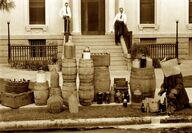
It has been called shepherd's delight, a social lubricant and even the nectar of the gods. But despite this collection of pleasing sounding names, there have been others not nearly as flattering, like rotgut, devil's brew or worse. Of course, they all refer to alcoholic beverages. For centuries, in fact for millennia, holders of these two opposing opinions have debated and sometimes clashed over the controversial concoction. The argument was usually not over the drink itself,...

The Sierra Nevada has provided people with beauty and escape for hundreds, if not thousands of years. John Muir called the 400-mile-long, 70-mile-wide mountain chain the "Range of Light" and once proclaimed, "The mountains are calling and I must go." And many have felt the same magnetic attraction. Some mountain lovers are lucky enough to live in the high country, but the rest of us must be content with periodic incursions. Fortunately for us living in Tulare County, we have...
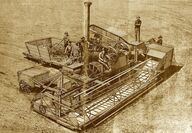
The San Joaquin Valley has long been known for its highly productive agricultural land. Mention the valley and many people automatically think "bread basket." Tulare County is one reason for that reputation. Early on, the county captured the attention of the media and farmers looking for a place to earn a living off the soil. As early as 1854, folks were talking about Tulare County. In fact, San Francisco's newspaper the Daily Alta California announced that, "Tulare County is...

Many people have heard of the nightmare of the 1930s called the Great Depression. Our country, in fact most of the world, was hit by a devastating economic downturn, and many people lost their jobs. Family incomes plummeted. It is estimated that during the worst of the Depression, 25% of U.S. workers were unemployed. Family bills went unpaid and home mortgages went into default, leaving many without homes or basic necessities. The collapse left local economies also hurting at...
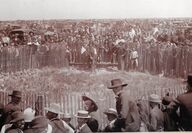
In its heyday, the little town of Traver had quite a reputation - not just for one thing, but several. Huge amounts of wheat were shipped by rail from there and as a result the town gained a reputation as the largest wheat shipping center in the U.S. Much of the soil around the town was covered with alkali so the town became known for the unwanted salty substance. Then there was the violence. For a short time, the little town's streets ran red with blood with many calling it...
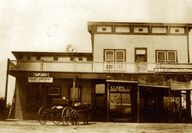
There is something special about the little town of Goshen and I believe much of its uniqueness is connected to its history. When the railroad pushed its way through the San Joaquin Valley in 1872, it created new towns along the way like Delano, Tulare, Merced and Goshen. Easy access to the railroad line increased the likelihood of economic success for a community, so towns established on the route clearly had an advantage. As a result, Goshen began with high hopes for...
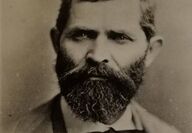
Before Kern County began in 1866, much of the area within its current boundaries was part of Tulare County. One of those areas was the mountainous region lying between the Kern River and Walker Basin. It was an interesting place in its early days and created all kinds of excitement...all centered around finding gold. In the spring of 1864, a small group of miners discovered a rich quartz deposit. They tried to keep their gold discovery quiet, but the word could not be...

The stagecoach was a common mode of transportation in the southern San Joaquin Valley in the 19th century. For the most part, it served its purpose in getting a traveler from one place to another, but it also had its drawbacks. In fact, in most cases, those that chose the four-wheeled vehicle, usually pulled by horses, had a stronger sense of adventure and a higher pain tolerance than the average person. And there was a reason coaches had such a negative reputation. The lurchi...

In 1850, Lt. George Derby, a topographical engineer with the U.S. Army, and his party explored the Tulare Valley (now called the San Joaquin Valley) looking for a good site for a military post. In his report, he made important observations, especially about the water features. He noted the lakes of Buena Vista and Tache (Tulare) and rivers like the Kern, Tule and Francis. The Francis, now called the Kaweah River, seemed to attract his special attention. He wrote in his...
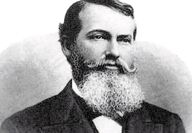
Thomas Hinckley Thompson was born in Dundee, Illinois on October 1, 1841. During his life, this bright and talented man did many things and did them all well. He was an engineer, farmer, furniture maker, real estate developer and even served as an officer in the Union Army during the Civil War. But of all his pursuits, he is probably most known, in central California at least, for publishing his classic Official Historical Atlas of Tulare County, California - the gold...

In this part of the San Joaquin Valley, it's easy to take the word "Sequoia" for granted. After all, the famous national park is in our backyard and the word is used everywhere. It can be found on street signs, business names, and even on craft beers. But the word Sequoia is so much more than a pretty name. It represents a special place created in 1890 as the nation's second national park, and the first to be established to protect a living thing - the giant sequoia tree. The...

He was a western man through and through. Lean in frame, he stood 6'5" and wore buckskin clothing. He was a crack shot, an expert on horseback and when performing, he made rodeo fans cheer with delight. So who was this bigger-than-life man who cut his teeth in Tulare County and became known throughout the world as "Arizona Charlie"? Abraham was born to John and Margaret Meadows on March 10, 1860 on the family homestead near Elbow Creek just outside of Visalia. His father was...

One of the groves of eucalyptus owned by the Eucalyptus Timber Corporation. Circa 1911. John McCubbin standing by his tree. Circa 1926. (Photo courtesy of the Reedley Museum.) The David Douglass tree standing at the Visalia Convention Center. Circa 1980. Tulare County is known for its trees. The majestic giant sequoias and huge valley oaks seem to attract most of the attention, and rightfully so. Both have played important roles in our history. But there is another tree that...

The Panama-Pacific International Exposition was by most accounts one of the most successful events in California history. The ten-month fair was held in 1915 and during its 288-day run, 19 million people visited the palaces, courts, buildings and attractions on the 635 acres in the marina area of San Francisco. It was created to celebrate and commemorate the completion of the Panama Canal and the 400th anniversary of the discovery of the Pacific Ocean by the Spanish explorer...
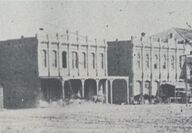
As the amount of irrigated land in California increased in the early 1900s, so did the need for farm workers. The workers came, and unionization soon followed. Job actions became common and between 1933-1939 California had 180 strikes involving nearly 90,000 workers. One of the strikes occurred in Tulare County, and in 1933 the little town of Pixley became ground zero for a bloody incident. Cotton was picked by hand in those days and the local cotton pickers, through the Canne...
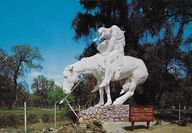
Tulare County is known for many things including high mountains, rich agricultural land and giant sequoias, but as a rule it is not known for art. However, there is one exception -Tulare County is home to a sculpture that arguably is the most recognizable art object in the world. It is called "The End of the Trail" and the statue has become one of Tulare County's claims to fame. The story of the iconic tired American Indian on an equally tired horse is an interesting one and w...

There's no question about it, the beautiful land that became Visalia was a travel agent's dream. Situated in a huge oak forest with meandering streams, native grasses and wild flowers, and abundant fish and game, all of it set against the backdrop of the picturesque Sierra Nevada, made it a lovely place. So it's not surprising that settlers came and called it home. But soon after settlement, critics of this "Garden of Eden" began to emerge. The complaining focused on a number...
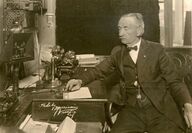
In the mid-19th century, communication with the outside world for little remote settlements in California was a challenge. Mail delivery was slow and important news would take weeks or even months to make its destination. The short-lived Pony Express and the Butterfield Overland Mail stages helped somewhat, but urgent messages were painfully slow. Visalia was one of these secluded settlements, but by June 1860, thanks to the telegraph, the problem was about to improve. In the...
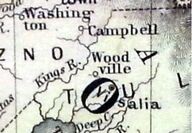
Beginning about two million years ago, our valley was home to a huge freshwater lake. For hundreds – perhaps thousands – of years, it provided native people with food, and for a much shorter time, it was used by European settlers for fishing and hunting. For much of its life, the lake was a substantial body of water, however, the lake's size was dependent on the rivers, creeks and sloughs that fed it with Sierra Nevada runoff. When the water deposits were generous, it rep...

As they traveled from town to town, the two famous advocates passionately pushed for women's right to vote. Because of their celebrity status, they made news everywhere they went, and on a fall evening in 1896, it was Visalia's turn to be wowed by Susan B. Anthony and Carrie Chapman Catt. Susan B. Anthony was born in 1820 and was one of the most well known suffragists in the country. She had been an activist all her life and was dedicated to several causes, but none more...
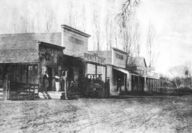
The little outpost began as Whitmore's Ferry on the Kings River. It later made a name for itself as a stage stop on Butterfield's Overland mail line in the 1850s. By 1861, when the 2,800-mile St. Louis-to-San Francisco route was abandoned, the little settlement already had a hotel, store, blacksmith shop and a well-established ferry service carrying travelers across the river. And by 1873, the town now called Kingston was being described as "one of the busiest little towns in...
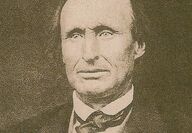
The Tulare County election of 1853 marked the beginning of the end for the tiny settlement of Woodsville. When Tulare County was formed from the southern section of Mariposa County in 1852, Woodsville became the first county seat. Its position as the county capital was short lived, however, and Woodsville's misfortune became a blessing to Visalia. How the transfer of power happened is interesting, especially if early county settler Richard Chatten's version of the event is...
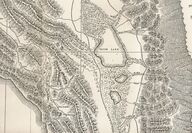
George Horatio Derby was a brilliant man whose short 38 years of life was packed with adventure and accomplishment. During his life, this West Point graduate was a newspaper journalist, topographical engineer, practical joker and humorist some say on par with Mark Twain. Very little of his life had any connection with Tulare and Kings counties, but for two months he explored our area. Fortunately for us, his military mission gave us a glimpse of our region just prior to...
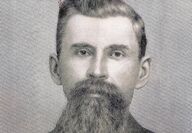
The settlers of Mussel Slough had worked hard to make their farmland some of the best in Tulare County. They dug miles of irrigation ditches and built homes, barns and roads, turning arid ground into productive farmland. By any measure they should have been rewarded for their hard work, but one day in May, 1880 reward turned to pain as farmers died in a deadly shootout on ground they loved. How did this productive agricultural land become a killing field? In the 1870s the...